The sixth flagship SOIF retreat explored the themes of lean and agile foresight, and the future of education and skills. NATO’s live challenge provided an opportunity for our 28 participants to put the learning into practice. Diverse insights were provided by many thought-provoking speakers
SOIF was founded to help policy-makers and business leaders make strategic choices, manage risk and create future-ready organisations. The annual flagship retreat is the highlight of SOIF’s calendar, which also includes project work with clients, training and skills development, delivery of advisory sessions, and retreats customised for sectors, regions, or organisations – to enhance futures skills
28 participants from 17 different countries were taken through the SOIF four stage Learning Journey: Scoping, Ordering, Implications, and Integrating Futures. The NATO Live Challenge allowed them to use their newly learnt skills to work towards a real-life project – feeding back the resulting insights to the client at the end of the week

Each stage of the Learning Journey was brought to life by a wide range of speakers (with topics covering everything from neuroscience and storytelling, to education and the future of technology) to better understand the art of foresight.
A huge amount of work goes into planning the retreat – from the organisers, Cat Tully, Peter Glenday and Allie Bobak, as well as the guest faculty members and the speakers
[tweet id=”893496031677173760″ align=”center” width=”400″]
[tweet id=”893182939718197248″ align=”center”]
[tweet id=”894550116115390464″ align=”center”]
[tweet id=”894112390379384832″ align=”center”]
Day 1 – Welcome and introductions
Arrivals, welcome and introductions, keynote speakers, faculty session, introducing the Live Challenge
As participants arrived at the grand entrance to Hartwell House we asked them to share what comes to mind when they think about the future: excited, nervous, curious, uncertain, thoughtful, anxious, optimistic, cautious…
[tweet id=”894568676728418304″ align=”center”]
After a warm welcome from SOIF Director Cat Tully, we got to know each other by sharing the stories of our names, our gift, and our community
[tweet id=”894573405466488832″ align=”center”]
Keynote speakers Banning Garrett (Faculty, Singularity University) and Natalie Jabangwe (Chief Executive – EcoCash ZW, Econet Wireless Zimbabwe) set an excellent tone for the retreat, presenting an optimistic view of the future of technology



[tweet id=”894589669693902850″ align=”center”]
Steve Allder (Consultant Neurologist, Re:Cognition Health) gave a fascinating faculty talk – how neuroscience explains why we don’t do the things we know we need to, even in the face of rational facts demonstrating a need to change, and why we aren’t creating the leaders we need

[tweet id=”894606049860349953″ align=”center”]
With our futures appetites thoroughly whetted, Cat Tully introduced SOIF’s values and our seven Principles that form the basis of all the work we do. These principles shape the design of the retreat

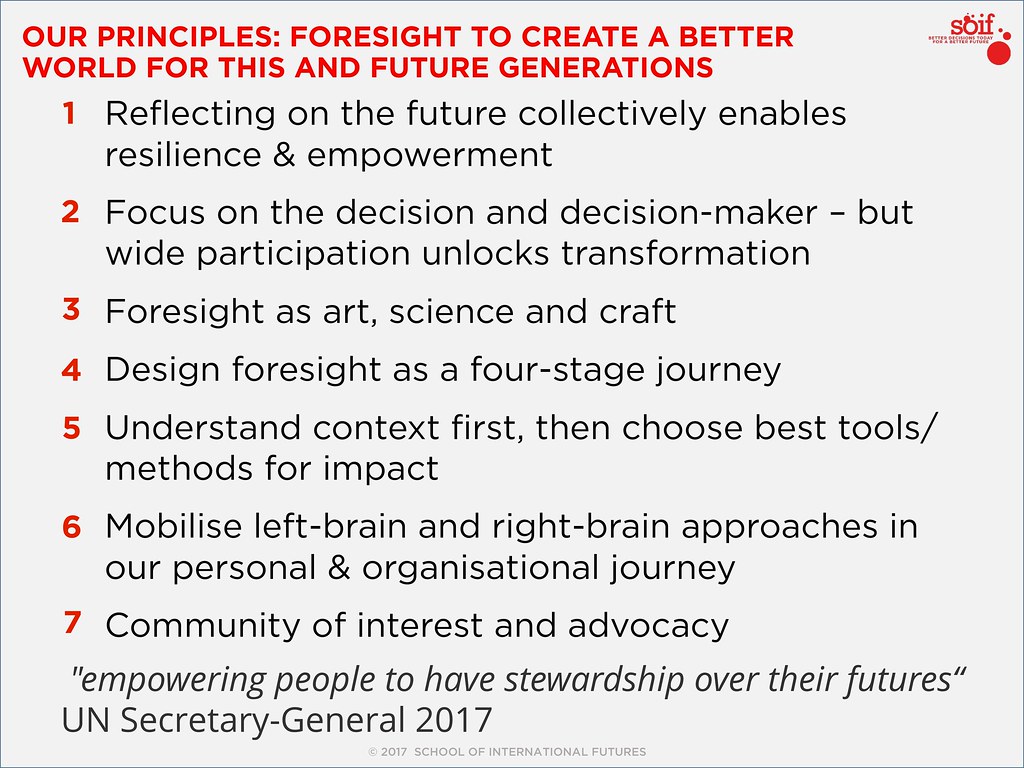
Next, Jamie Shea (Deputy Assistant Secretary General for Emerging Security Challenges, NATO) and Peter Glenday (Director of Programmes and Research, SOIF) introduced the Live Challenge – laying the groundwork for a real-life exercise that participants will work on during the retreat, to put the learning into practice… outputs will be fed back to Jamie by each group at the end of the week

[tweet id=”900448118117994496″ align=”center”]
After reception drinks and dinner, Laline Paull, author of The Bees and The Ice, shared her insights on how the craft of storytelling can help bring future narratives to life

[tweet id=”894659039124234242″ align=”center”]
All speakers during the retreat were thanked with fabulous hand drawn portraits of themselves by the talented Ariadne Radi Cor

Day 2 – Scoping to Ordering
What the policy maker needs and how foresight can meet that need – principles of futures thinking and drivers of change – participants’ experiences – Lean and Agile foresight
After a morning yoga session to get us in the right frame of mind (alongside a hearty breakfast), day 2 kicked off with participants reflecting on what day 1 had left them feeling most curious about
A panel discussion quickly got us back into weighty matters with speakers Arthur Muliro (Deputy Managing Director at the Society for International Development (SID) in Rome) and Jane Davidson (Former Welsh Minister and architect of the Future Generations Act) discussing their reasons for commissioning futures work and the challenges encountered



[tweet id=”894846673062678530″ align=”center”]
Then it was time to put the participants to work – Cat Tully introduced the first stage of SOIF’s four stage process: Scoping, before we split into four groups to scope out the Live Challenge
[tweet id=”894865899227926528″ align=”center”]
[tweet id=”894893766368141314″ align=”center”]
With the Live Challenge scope determined, guest faculty member Stuart Candy (Associate Professor, School of Design, Carnegie Mellon University) introduced us to a range of foundational foresight concepts and approaches
[tweet id=”894917241338253312″ align=”center”]
[tweet id=”894926127143284736″ align=”center”]
Inspired by the faculty session, participants got back to work on the Live Challenge – this time identifying the drivers of change for the future context surrounding NATO
[tweet id=”894947125523603457″ align=”center”]
No rest for the SOIF participants at the end of the afternoon as they share their experiences with us – it’s fascinating to draw links between the huge diversity of knowledge, skills and experience around the room
[tweet id=”902263650794303489″ align=”center”]
[tweet id=”894967955821387781″ align=”center”]
The perfect end to day 2 was provided by Jeff Jonas (Founder and Chief Scientist, Senzing). A fascinating fireside chat on lean and agile foresight, covering innovative approaches to drawing information from big data, physics principles, jigsaw puzzles, and counter-terrorism. Beautifully rounded off by the chance to experience the real-life smell of an asteroid
[tweet id=”894990067218960386″ align=”center”]
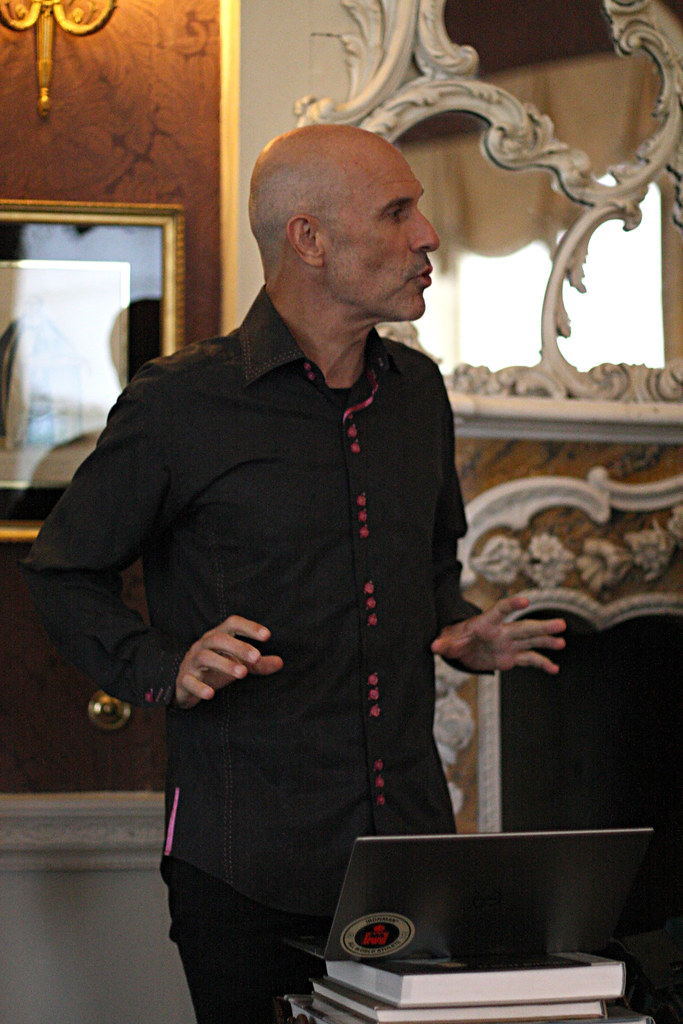

Day 3 – Ordering to Implications
Education and skills – Introduction to scenarios and archetypes – global trends – archetype development
We got into the right state of mind for day 3 with a morning meditation session, and reflection on what we’d learnt so far and what we were still curious about
[tweet id=”895209309797265408″ align=”center”]
Peter Glenday launched our key policy theme of the future of educational and skills – a panel of participants showcased their experiences and shared their knowledge

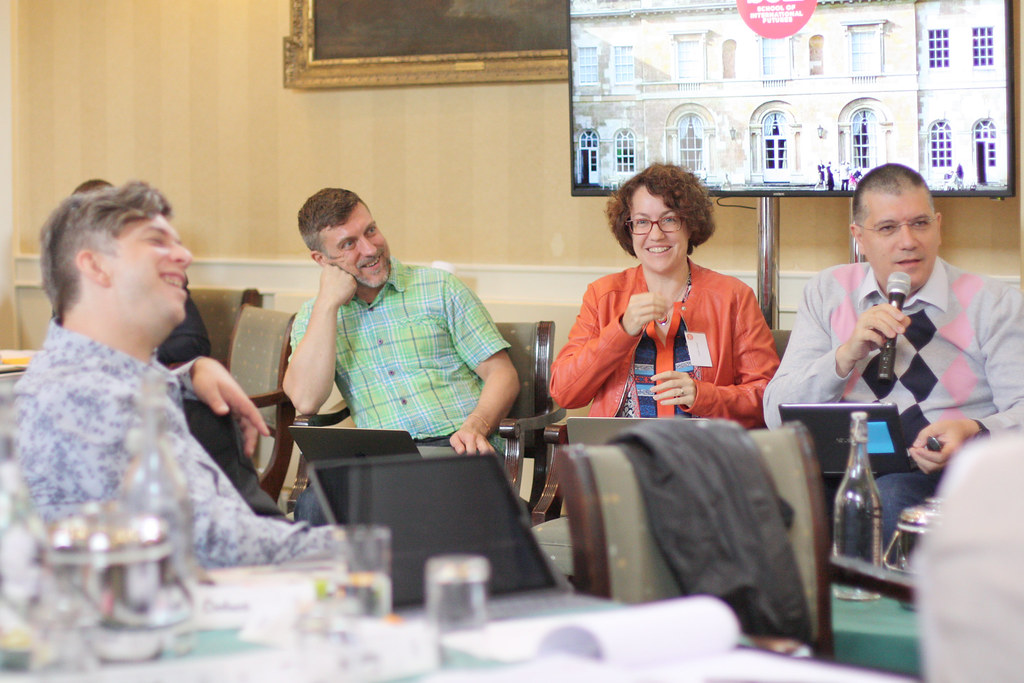
In the following faculty session Stuart Candy introduced us to different models for building futures scenarios and their use in policy-making. We will use the four archetypes of Grow, Collapse, Discipline and Transform as we work through the NATO Live Challenge this afternoon. Stuart highlighted the importance of considering different levels of thinking – e.g. operational, strategic, foresight…
[tweet id=”895209488353046528″ align=”center”]
After a break for tea and coffee, Alun Rhydderch (Founder, Soif-Horizons) introduced an international panel:Matthew Burrows (Director, Strategic Foresight Initiative, Atlantic Council); Mads Ecklon (Head of Division, Crisis Management Division at the Danish Emergency Management Agency (DEMA)); and Cher Potter (LCF/V&A Senior Research Fellow, University of the Arts London / V&A Museum). We heard how scenario development has been used in practice to directly impact policy
[tweet id=”895228258429673472″ align=”center”]

[tweet id=”895231359509303297″ align=”center”]

[tweet id=”895233855317319680″ align=”center”]

With lots to think about, participants headed back to their groups to develop archetype scenarios for the NATO Live Challenge, building on the drivers for change identified yesterday – what would a Collapsed world look like in 2030?

Time for lunch, but first many participants spent the first half hour of their break putting together a Pandora Cell Analysis with Mads Ecklon – a futures technique developed by DEMA
A learning walk around the beautiful grounds of Hartwell House was scheduled after lunch to give participants some time and space to reflect on their SOIF2017 experiences as we reach the halfway point
[tweet id=”895287833438584833″ align=”center”]
We headed back to our Live Challenge groups to take a fresh look at the scenarios, and get ready to present them back in plenary in the last session of the day – each future world was brought to life through a newspaper front page complete with headlines, good news and bad news articles, graphics and adverts
[tweet id=”895310253679685632″ align=”center”]
[tweet id=”902529420229058560″ align=”center”]
Our learning continued into the evening with a pre-dinner audience with Jean-Philippe Toussaint (Author and Photographer). Jim Murphy (Former UK Minister for Europe) joined us as an after dinner speaker


Day 4 – Implications to Integrating Futures
Building on our archetypes to identify implications for policy – application of foresight to policy
After a refreshing morning yoga session, Cat Tully walked us through a recap of the previous three days. To encourage deeper reflection before embarking on the next steps, Paul Davies led us through an individual free writing exercise
[tweet id=”895566772258123776″ align=”center”]
The morning’s faculty session with Stuart Candy focused on the bridge between foresight and policy… identify strategies in response to each scenario, and evaluate all strategies against each scenario – which are resilient and which only work in certain circumstances?
[tweet id=”895572272169316352″ align=”center”]

[tweet id=”895570099930902528″ align=”center”]
The learning from Stuart was put straight into practice as participants continued the Live Challenge by developing a final scenario – their vision for the best future context for NATO – and identifying strategies that NATO could adopt to respond to the range of scenarios developed during the week

Experiential futures was the theme of the next faculty session. How to immerse your audience in future scenarios – Stuart Candy shared some fascinating examples
[tweet id=”895607549894025218″ align=”center”]
[tweet id=”895610671831953408″ align=”center”]
Today’s panel discussion, chaired by Cat Tully, focused on how to think through the implications of foresight work, and develop the strategic capability of organisations to harness foresight in policy and decision-making processes
Our panelists were: Indy Johar (Co-founder of Architecture OO); Nicholas Colloff (Director, Argidius Foundation); Rosemarie Forsythe (White House National Security Council Director for Russian, Ukrainian and Eurasian Affairs)


[tweet id=”895644367985287172″ align=”center”]
[tweet id=”895648138631008256″ align=”center”]

[tweet id=”895643270675615744″ align=”center”]
The afternoon was rounded off with a final Live Challenge exercise – to prepare group presentations to Jamie Shea on our findings in the morning – and a faculty session from Stuart Candy looking at how to embed foresight into an institution and into the culture
[tweet id=”895654038368391169″ align=”center”]
[tweet id=”895655728471564290″ align=”center”]
[tweet id=”895746150577340416″ align=”center”]
Thursday night was a time for getting dressed up and celebrating how far we’d come at the gala dinner – cheers!

[tweet id=”895748127227088896″ align=”center”]
Day 5 – Reporting back on the Live Challenge and Lessons from the Week
Integrating the foresight approach: presenting back to the client – bringing foresight back into the office – planning our projects – lessons from the week as we wrap-up the journey for this year. Goodbyes
After a morning reflection session, it was time for the four groups to feed back their conclusions to Jamie Shea at NATO
[tweet id=”895932147265130496″ align=”center”]

Participants delivered four insightful presentations – incorporating reportage of future news headlines and a creative and polished video advert for hi-tech surveillance equipment – challenging current perceptions of what security means

Feedback from Jamie was thoughtful and encouraging – the outputs of the work performed over the week will be taken forward and incorporated into NATO projects – success!
[tweet id=”895952553757769728″ align=”center”]
Talented artist Ariadne Radi Cor joined us on the Friday to capture visual minutes of the outputs, conclusions and reflections on the week

Next came the final faculty session of the week by Stuart Candy – how to integrate futures work into your organisation: Know your audience; Be creative about how you communicate with them; How can you capture their imagination?; Make the implications obvious
[tweet id=”895980479249133568″ align=”center”]

[tweet id=”895979746202456065″ align=”center”]
After a coffee break it was time to starting think about our own futures – how are we going to apply the learning to our own organisations and projects? Participants were given time to reflect – choosing whether to work individually or in pairs or small groups. To help consolidate the reflection, SOIF advisers and coaches spent time with small groups helping to develop their future project plans
Finally, before saying our goodbyes, we all shared our final insights from the week and actions we’re going to take as a result of what we’ve learned
[tweet id=”895980479249133568″ align=”center”]
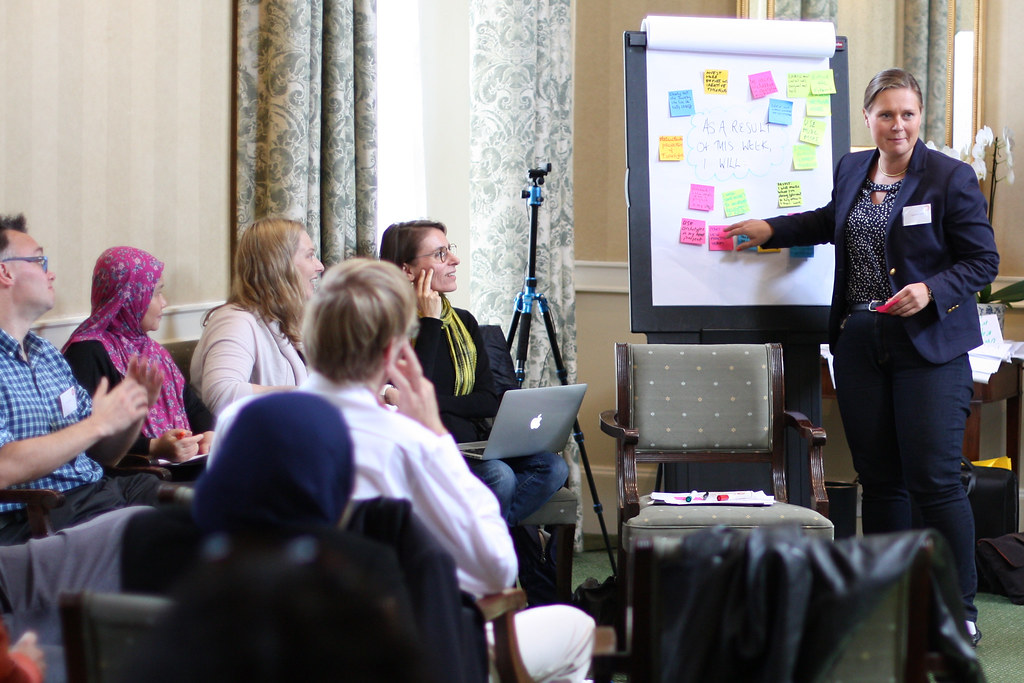
[tweet id=”895982310398578688″ align=”center”]
Cat ad Peter wrapped up the week with final thoughts, thank yous and goodbyes, before we all dispersed to lunch and taxis
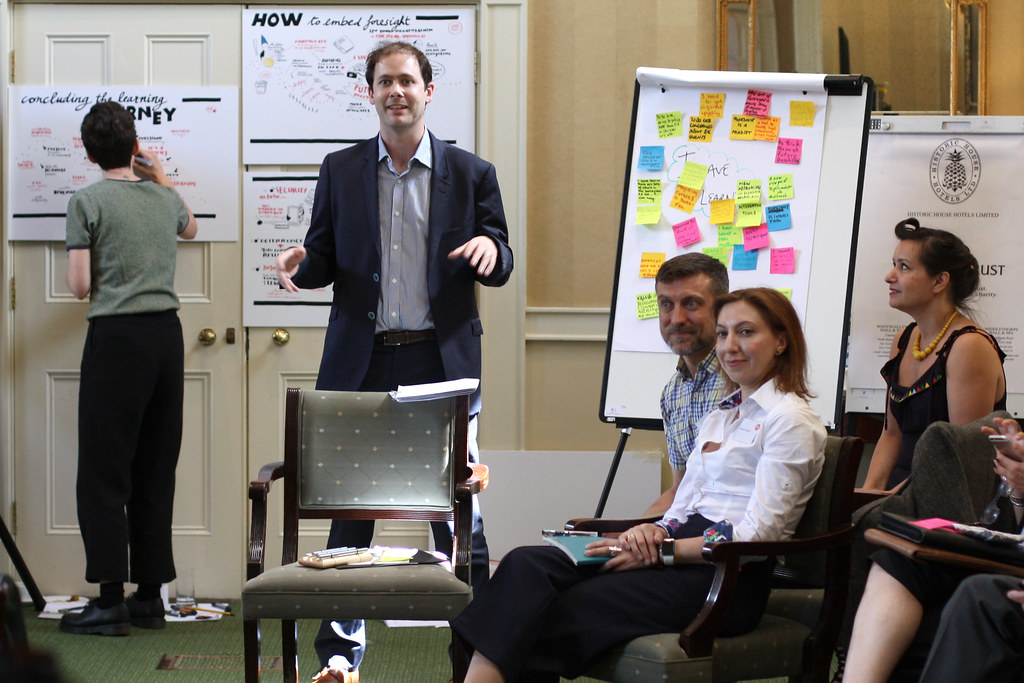
After the retreat – Reflections and staying in touch
It doesn’t end here – as we all return home, the networks, experiences and “Aha!” moments from the retreat will continue to make a difference to everyone who attended – and the organisations they work for
[tweet id=”896065662409293826″ align=”center”]
[tweet id=”895176636857020417″ align=”center”]
[tweet id=”896679294600183808″ align=”center”]
[tweet id=”894887487054761984″ align=”center”]
[tweet id=”898628715730485248″ align=”center”]
